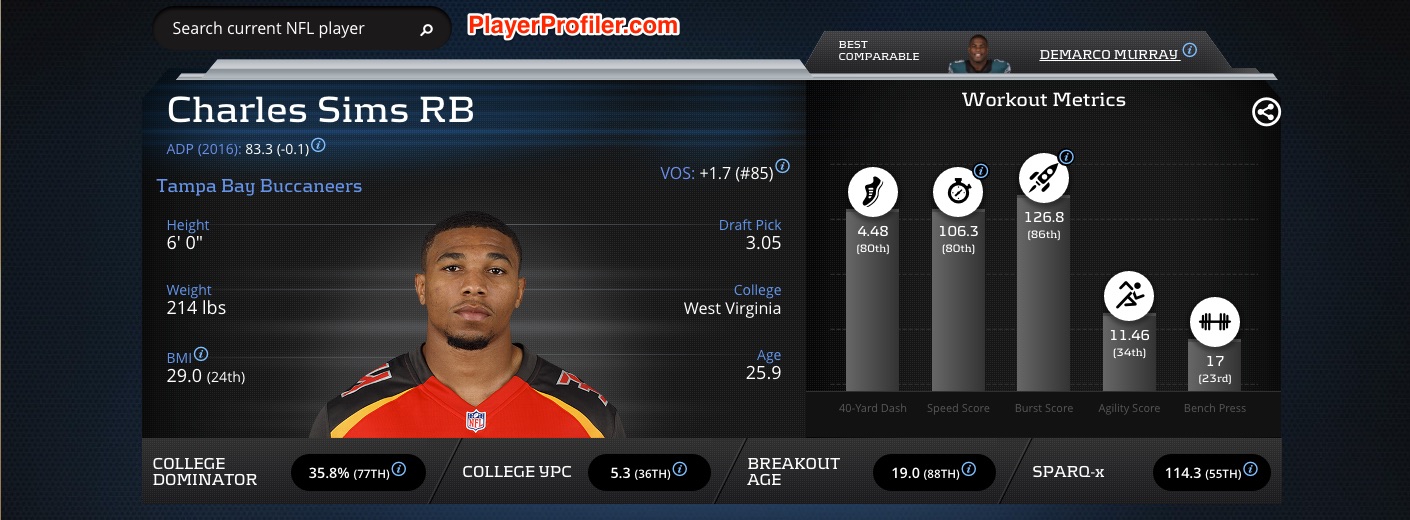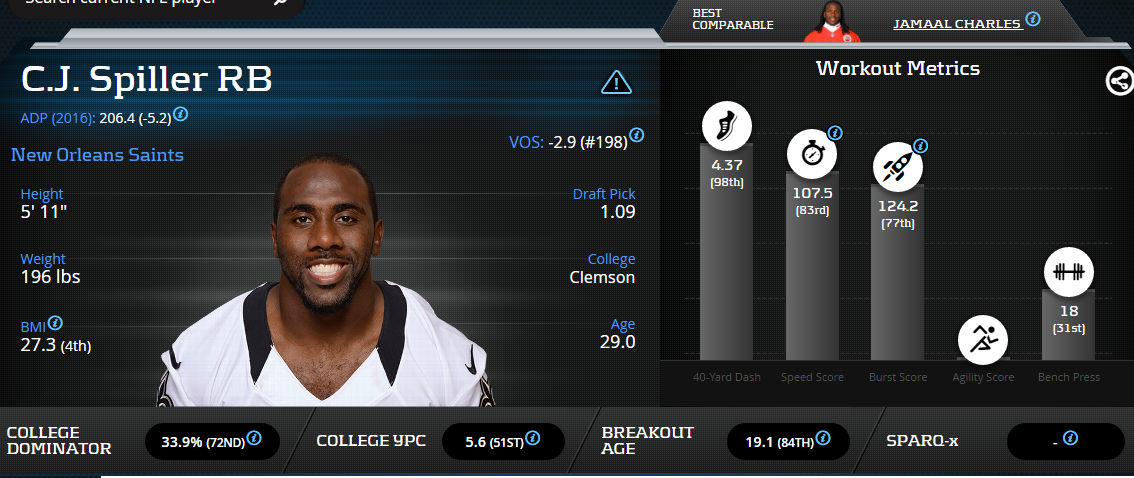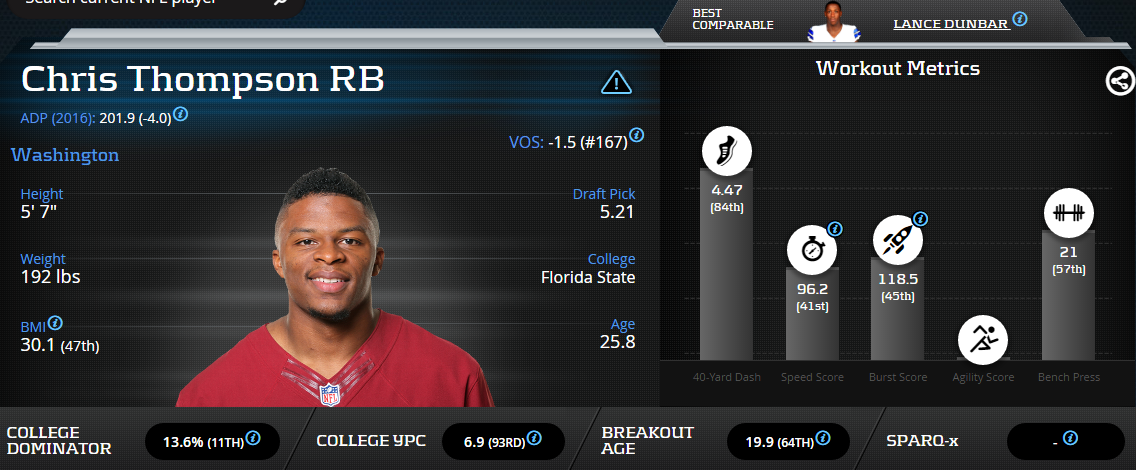For those of us who have been involved in fantasy football more than a few years, we look back on the past with nostalgia when talking about running backs. We all know the narrative…you drafted RB/RB in the first two rounds because otherwise you had no shot of winning. The past five years (depending on who you ask of course) more or less have seen a huge shift in terms of utilization of the running back position in football, and thereby fantasy players have had to adapt to changing conditions. Of course, some will attribute this to the increased usage of PPR scoring formats, but any look at the decrease in the number of run plays or the lowering of overall touches by main backs shows this is simply not the case.
Satellite Back Emergence
What has occurred has been a decentralization of the running back position from a work horse position to a running back by committee approach by the overwhelming majority of NFL teams. While it is not a universal approach, most teams employ a two pronged system whereby there is a first and second down back (often a grinder or in between the tackles back) and a passing down back (often called a change of pace, scat, or gadget back).
The role of the grinder is to control the clock, gain short yardage when necessary, and generally move the sticks between the 20s. They are typically bigger backs, 220-plus pounds, and ideally have a propensity to score touchdowns in the red zone. Perfect modern examples of this are Jeremy Hill, Chris Ivory, Mark Ingram, Carlos Hyde, and others. While it is very possible for them to start catching passes out of the backfield, the expectation is that they will have around 10-15 catches per year. Hence, when someone like Mark Ingram catches 50 passes (as he did in 2015) it makes fantasy owners salivate. Grinders are perceived to have a capped ceiling due to their inability to catch the ball so when the team adjusts their strategy to incorporate them more in the offense, the perception is that they could break the glass ceiling and enter “work horse” territory, which has become a prized possession in all formats.
Fortifying Zero RB
The passing down back is meant to do a number of functions, including pass protection, catch passes, and pick up long yardage on “space” running and passing plays. They typically have 50-plus catches, anywhere from 7-12 yards per reception, but have a low touchdown total. Their fantasy value is typically capped at a RB2 but with weekly consistency. Of course, there are exceptions to the rule such as Danny Woodhead, but for every Woodhead, there are upwards of a dozen RB2/3s who are third down backs.
The passing down back possess a similar conundrum. While it has a safe floor, their ceiling is capped by a number of external factors that they have little to no influence over. While their numbers may fluctuate over game script, they generally have a safer week to week output over their grinder counterparts.
The past years have seen a big uptick in the propensity of the Zero RB Theory, whereby you use your first 3-5 rounds to select stud or high upside wide receivers, and then spend the later rounds selecting running backs who are in a committee or may have an opportunity to shine pending injury. The Zero RB Theory makes players almost completely dependent on passing down backs to succeed. Additionally, it makes the value of passing down backs increase, propelling them to the 4-8 range, where they used to be in the 9-12 range just a few years ago. The idea is to maximize output from a safer position (wide receiver), while minimizing risk with a more volatile position (specifically perceived “work horse” backs). Lastly, it has created a demand for running backs on poor teams who are likely to throw more often since more top 12 running backs, year after year, are on winning teams.
While the style and philosophy regarding passing down backs is still generally new in the grand scheme of things, there are certain trends that exist among them that can be examined. For this exercise, I am going to be looking at PlayerProfiler.com and highlighting six popular passing down backs going into the 2016 season. As such, the RBs I will be looking at are Giovani Bernard, Duke Johnson Jr., Charles Sims, Danny Woodhead, Dion Lewis, and Shane Vereen. All of these backs either finished top 24 at their position in 2015 or would’ve pending they did not get injured.
 Charles Sims Advanced Stats & Metrics Profile
Charles Sims Advanced Stats & Metrics Profile
So what are some of the recurring themes about these running backs? Minus Charles Sims, all of these running backs clock in under 207 pounds and under 6-0 tall. Other than Sims, they have at least a 60th-percentile Agility Score and College Dominator Rating (Danny Woodhead‘s Dominator Rating reached the 97th-percentile). Their body mass index (BMI) also tops out at the 62nd percentile which is not surprising at all considering their skill set. Perhaps the most interesting statistic to me is that, on the professional level, all of them average at least a 72 percent catch rate.
C.J. Spiller
Why does this all matter? Many times, we as analysts and writers like to anoint certain players as the “third down” back when they simply lack the talent or characteristics to be that player. Then there are other times where players are screaming at us and we want to ignore it, because we don’t like the player. For me, C.J. Spiller is that player. I am eager to anoint Daniel Lasco the third down back to own in New Orleans, but after reviewing the various metrics and analytics, I simply cannot. C.J. Spiller simply has a more befitting profile to fill in that role. While he has battled injuries and inefficiency the past years, his style is rather intriguing. Whether it be his build (5-11, 196-pounds) or his career catch rate (77-percent), he just makes so much sense as a third down back in New Orleans.
While Mark Ingram showed a great adaptability catching the ball in 2015, it clearly did not help with keeping his fresh and healthy deep into the season. C.J. Spiller is presumably entering the year at full health and his overall competition is minimal, hence Spiller could be a sneaky play in 2016 as a pass catching running back on a high octane offense, which is one of the teams that has excelled in the running back by committee approach. Thankfully he will not cost you much to acquire but ultimately he could potentially be a RB2 and regain his value after seeing a great depreciation the past three years.
Chris Thompson
Another “under-the-radar” pass catching running back I have been in love with is Chris Thompson. At first, I admit I was worried how he would fair in this process because his initial metrics were incomplete. I quickly overcame this when I went a little deeper into his productivity stats, which ultimately bear similar to the aforementioned sextet of running backs. Chris Thompson only had limited snaps in 2015 due to injury and being in a committee, but he still managed to be No. 2 in yards per carry, No. 6 in yards per touch, and No. 9 in fantasy points per opportunity. His 72.9-percent catch rate falls within the general realm for productive and efficient pass catching backs. Although he was No. 88 at his position for snap share, he still managed to be No. 24 at receptions, No. 24 a targets, and be No. 27 at Production Premium.
Although Washington did bring in Keith Marshall as their seventh round pick, he does not threaten Thompson for third down work. The biggest threat to Thompson is the potential of Washington signing Pierre Thomas, who was an excellent pass catching running back in his prime. Pending Washington does not sign Thomas, Thompson could be one of the sneakiest late round picks for 2016. Washington in the second half of the year was one of the most productive offenses and they have only made it better since. I would not be surprised to see Chris Thompson end the year as an RB2 pending health considering the high output of the Washington offense.
Conclusion
As the running back position becomes more specialized, the passing down satellite back has emerged as a strategic fantasy football asset. An increasing number of fantasy-relevant RBs in the player pool is enhancing Zero RB as a viability fantasy football draft strategy. The optimal fantasy roster now often includes mid-to-late round pass catching specialists from Charles Sims to Theo Riddick to Chris Thompson to Shaun Draughn. Less workhorses and more specialists diminishes the value of running backs across all formats, incentivizing fantasy football enthusiasts to hoard electric pass catching backs in the later rounds.




